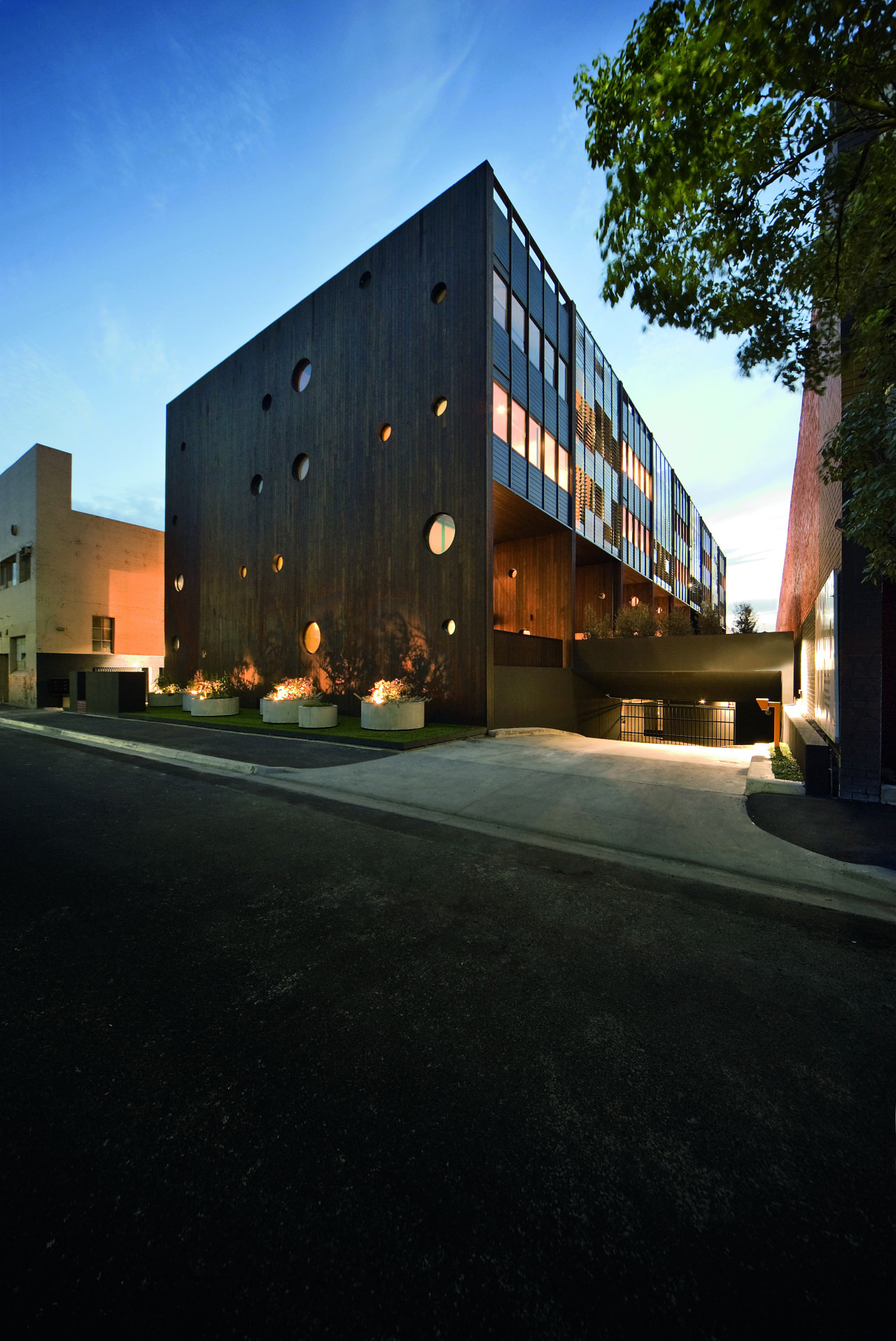Urban renewal
Ringed by greenery, this new apartment building is an oasis within a post-industrial streetscape

Diversity is one of the most appealing aspects of inner-city living. Communities are likely to comprise residents from a mix of age groups, trades, professions and socioeconomic backgrounds.
The new, multi award-winning Hue apartment building in Richmond, near the Melbourne CBD, was designed to cater to just such a mix of lifestyles. Developed by SC Land and designed by Jackson Clements Burrows, the building features two-storey townhouses with courtyards on the lower level, one floor of single-level, one-bedroom apartments, and two-storey penthouses. But it is not just its hybrid nature that sets it apart its architectural response to the semi-industrial neighbourhood also defines its character.
SC Land director Lance Chu says that in purchasing the site, the company recognised that the growing inner-city suburb was already the subject of many interesting experimental architectural developments.
"It was important for us to contribute to the built environment," he says. "The design needed to have architectural relevance for this neighbourhood. The building also had to reflect the community's socioeconomic diversity."

Architect Graham Burrows says that as well as providing a range of apartment types and maximising the yield for the site, the building was designed to be a freestanding sculptural object.
"The neighbouring properties include brick warehouse-style buildings. This design acknowledges the tough industrial landscape, and presents the building as an oasis. We effectively wrapped the building with soft landscaping. Courtyards have mature plants, and perimeter fences will soon be covered in creepers."
Burrows says the immense cedar-clad front facade is also a design response to both the industrial setting and the single-storey weatherboard properties opposite.
"The timber cladding visually softens the building, and helps to differentiate it from its neighbours. This was also a way to engage the building with the streetscape rather like a form of urban art. We took away all the obvious elements that give it a sense of scale. Instead, the building features an abstract planar wall with randomly punched circular windows. These are positioned so the residents cannot overlook the properties opposite. Circular planter boxes repeat the theme there is a sense that the holes in the facade have fallen and landed on the footpath where they have taken root."
The circle theme is repeated elsewhere, appearing in entry foyers, on courtyard walls and balconies.
"It is almost as though the circles are wistfully drifting their way back through the building," says Burrows.
The materiality of the exterior extends to the interior, where kitchens feature timber panels that echo the cladding. Pivot doors are set flush within these walls, highlighting the refined detailing that characterises all the apartments.
Sustainable design features provide a comfortable living environment year round. These include passive solar heating, cross ventilation and large eaves that provide shade from the summer sun.
Credit list
Developer
Display suite stylist
Builder
Living room and dining furniture
Heating system
Cushions and throws
Refrigeration
Display suite styling
Landscape designer
Kitchen manufacturer
Lighting
Bed linen
Oven, cooktop, ventilation and dishwasher
Awards
Story by: Colleen Hawkes
Home kitchen bathroom commercial design














